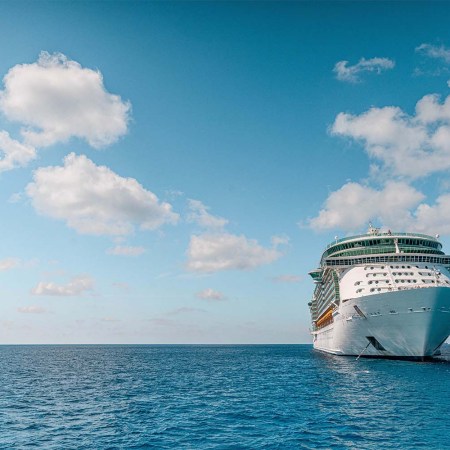In an unexpected move, Greece has announced that it will be reopening its borders to tourists as early as May. Less surprising is that there will be some stipulations. According to a report from Reuters last week, Greece’s Tourism Minister Harry Theocharis announced that anyone who is vaccinated, has antibodies or tests negative in advance of their trip will be invited to visit starting May 14.
It’s good news for both tourists and Greek tourism, with one in five Greeks working within the industry. The government hopes to attract at least 50% of the 31.3 million people who visited annually prior to onset of the pandemic, according to The Guardian, in an attempt to begin to reverse some of the economic hardship that has befallen the country.
“The World Travel & Tourism Council (WTTC) and its Members praise the Greek government for its tremendous efforts and strategic steps taken to restart international travel from 14 May,” Gloria Guevara, President and CEO of the WTTC, said in a statement showering Greece’s initiative with praise. The council hopes that their efforts will provide a roadmap of sorts for other European countries who might be looking to reignite their respective tourism industries.
On the list of European countries most trafficked by U.S. travelers in 2019, according to the National Travel and Tourism office, Greece was eighth in line (though, shaping up to be first in 2021), preceded by the UK, Italy, France, Spain, Germany, the Netherlands and Ireland.
Here’s a check-in on where the rest of those countries are at in regards to international travel and how it pertains to you, an American.
United Kingdom
All four U.K. nations have take a slightly different approach to virus-related travel restrictions, mostly with regard to where travelers will be expected to quarantine upon arrival, though neither Wales nor Northern Ireland are currently accessible by international flights (travelers to those places will first need to enter through either Scotland or England).
Most recently, the requirements to enter the U.K. as a collective have been extended to include a proof of a negative COVID test taken within 72 hours of arrival followed by a mandatory 10-day quarantine (again, whether that be at a quarantine hotel or at a private residence will be determinant on the nation). Additionally, as of February 15, all international arrivals are now required to take a second and third test on their second and eight days of quarantine, respectively.
As it stands now, the U.S. is not included on the U.K.’s list of barred countries, meaning technically you can go, but being that the U.K. is also the birthplace of a recent variant of the original virus, we’d urge you to err on the side of caution. And seeing as though they’re still very much in the throes of the pandemic, opportunity to really experience Britain from a touristic standpoint is virtually non-existent. Looking to the future, though, Boris Johnson has outlined a plan to begin lifting restrictions in phases, starting March 29. By May 17, he hopes to bring back indoor dining and entertainment, large outdoor events and, hopefully, international travel.
Italy
With Italy currently in a state of emergency, all non-essential travel from the U.S. is strictly prohibited and there does not appear to be a plan in place to reopen for tourism any time soon.
France
France closed its borders to all non-European travelers again, effective January 31. To be considered for entry, individuals must be able to provide a “compelling personal, familial, medical, or professional reason to travel,” which does not extend to tourism. It is unclear at this point when U.S. travelers will be welcomed back to la France.
Spain
U.S. citizens are only being permitted into Spain if they meet a very specific set of requirements or if they’ve obtained special permission from the Government of Spain. If, in the offset chance, you fall into that category, you will be expected to show a negative PCR test result taken within 72 hours prior to your arrival and a completed “Health Control Form.”
Germany
Germany is not permitting access to any U.S. travelers unless they meet one of only a few “narrow exceptions.” That said, starting March 22, they are aiming to begin opening some recreation and sport facilities, as well as indoor dining, pending the amount of confirmed cases. It’s not international travel, per se, but a definitive step in the general direction.
Netherlands
On February 23, the Dutch government announced the extension of many measures which were to be in effect until March 15, tentatively. Those measures, though, were not to include the admission of U.S. travelers, in show of solidarity with the rest of the E.U.
Ireland
U.S. citizens are permitted to travel to Ireland, though you are required to show a negative COVID-19 PCR test taken within 72 hours prior to arrival. In an effort to restrict non-essential travel, the government has also made mandatory a “Passenger Locator Form,” which indicates where visitors will be quarantining for the required 14 days. Failure to submit to a test in advance of your trip can result in a a fine of up to $3,000 or even six months in jail. In short, follow the rules.
This article appeared in an InsideHook newsletter. Sign up for free to get more on travel, wellness, style, drinking, and culture.

























